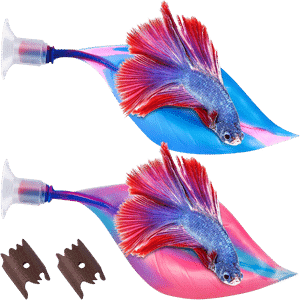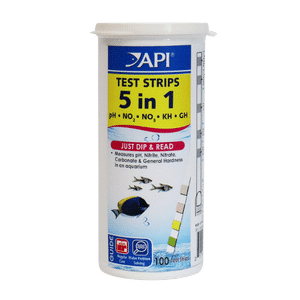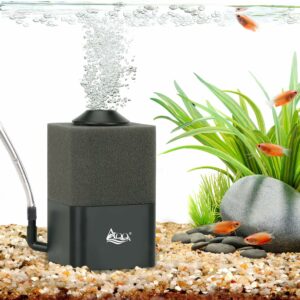How to Keep a Betta Fish Happy
Are you a proud betta parent or thinking about becoming one and would like to know how to keep a betta fish happy? You’ve come to the right place!
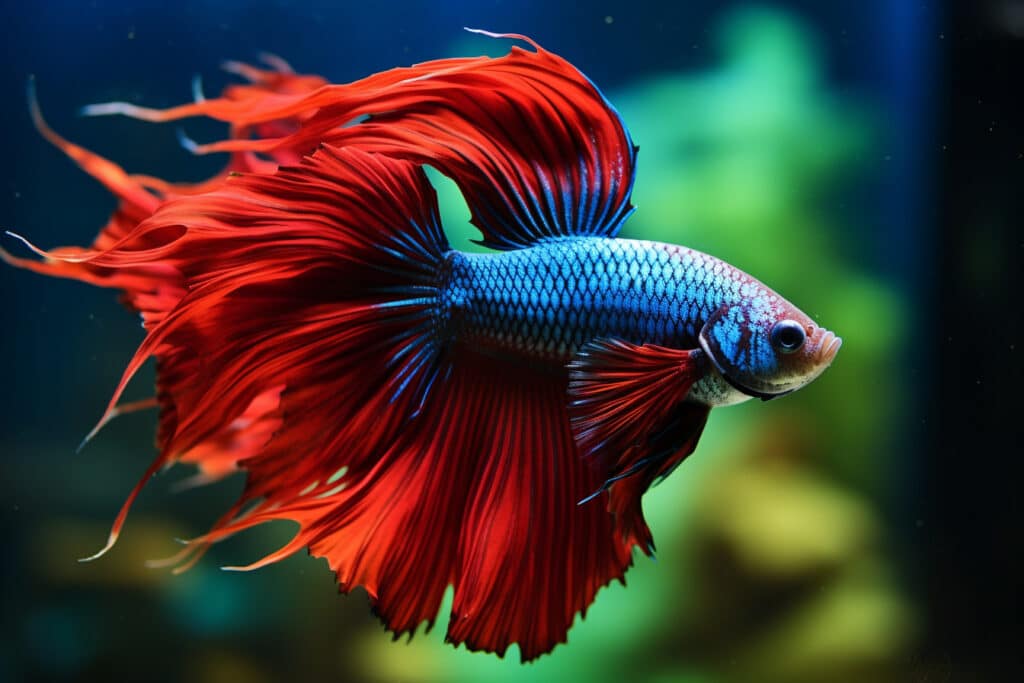
Betta fish, also known as Siamese fighting fish, are fascinating creatures with vibrant colors and unique personalities. But how can you ensure that your betta fish is happy, healthy, and thriving?
That’s where we come in! In this comprehensive guide on how to keep a betta fish happy, we’ll walk you through the essential steps to create the perfect environment, diet, and care for your betta fish.
From setting up a comfortable tank to choosing compatible tank mates, we’ve got you covered. So, let’s dive into the wonderful world of betta fish care and ensure your aquatic friend’s happiness!

Table of Contents 🦑
A Quick Heads-Up… If you come across links on this page that take you to products on Amazon Associate or other partner stores, they’re affiliate links. This means if you decide to make a purchase, BettaReef earns a commission, but at no extra cost to you.

Creating a Comfortable Betta Environment
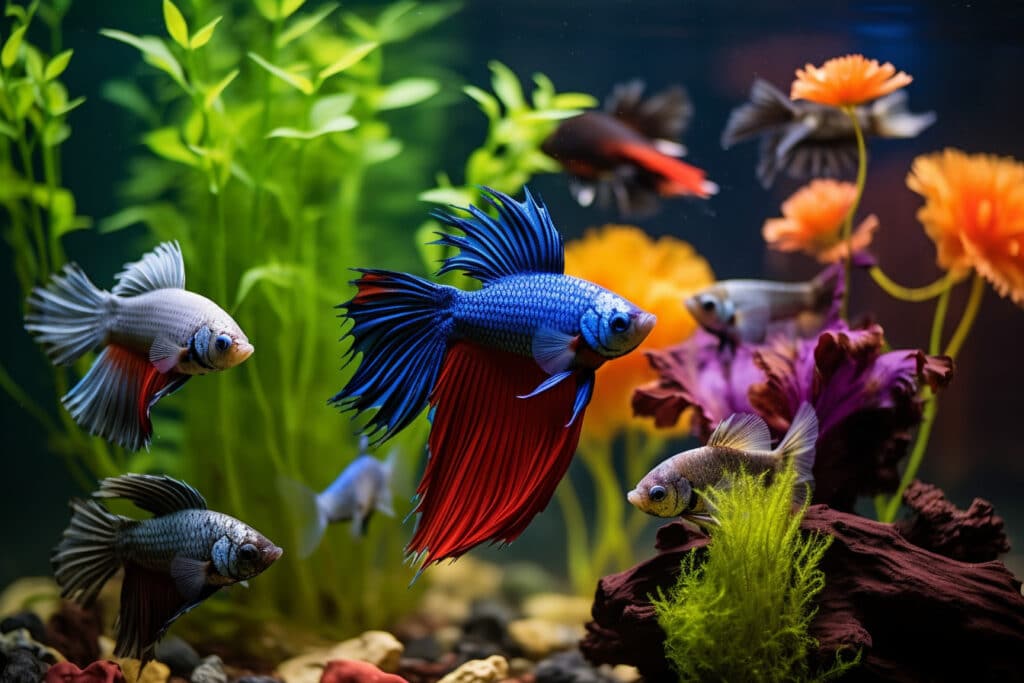
The first step to keeping your betta fish happy and healthy is to create a comfortable and stimulating environment. This includes considering factors such as the right tank size, ideal water temperature, and proper lighting. Addressing these factors will set you on the path toward helping your betta fish thrive.
Now, we will delve into what makes an environment betta-friendly.
Tank Size and Setup
Selecting the perfect tank size is crucial for your betta fish’s well-being and happiness.
A small tank will restrict their swimming, causing stress, while a spacious tank allows for exploration and activity, promoting a joyful betta.
A tank size of at least 5 gallons is recommended, with 10 gallons or more being the ideal choice. Anything less may result in an unhappy, unhealthy betta, and we wouldn’t want that, would we?
When setting up your betta tank, don’t forget to include a lid, as bettas are incredible jumpers and may escape their watery abode. Additionally, leaving some space at the top of the tank allows your betta to breathe air through their labyrinth organ, essential for their comfort and health.
Providing the right size and setup for your betta’s tank will enable your betta fish to live comfortably in their betta fish’s tank.
Water Temperature and Heater
Betta fish are tropical creatures, and as such, require warm water to thrive. The ideal water temperature for bettas is between 76-82°F (24-28°C).
To maintain this temperature range, it’s essential to install a fish tank heater and regularly monitor the temperature with a thermometer. Sudden changes in temperature can be stressful and harmful to your betta, so it’s crucial to carefully adjust the water conditions when necessary.
Maintaining a stable water temperature ensures your betta’s comfort. A consistent water temperature and well-maintained habitat contribute to a betta’s happiness.
Lighting Requirements
Proper lighting is essential for your betta fish’s well-being, as it helps regulate their day/night cycle and promotes a healthy environment. It’s best to provide artificial lighting, such as a low-wattage LED light, and avoid direct sunlight, which can cause rapid temperature changes and promote unwanted algae growth.
To balance the lighting in your betta’s tank, consider adding floating plants that can help reduce the amount of light reaching your betta. Creating a comfortable and healthy environment for your betta fish involves providing a natural day/night cycle and avoiding excessive brightness.

Enriching Your Betta's Home
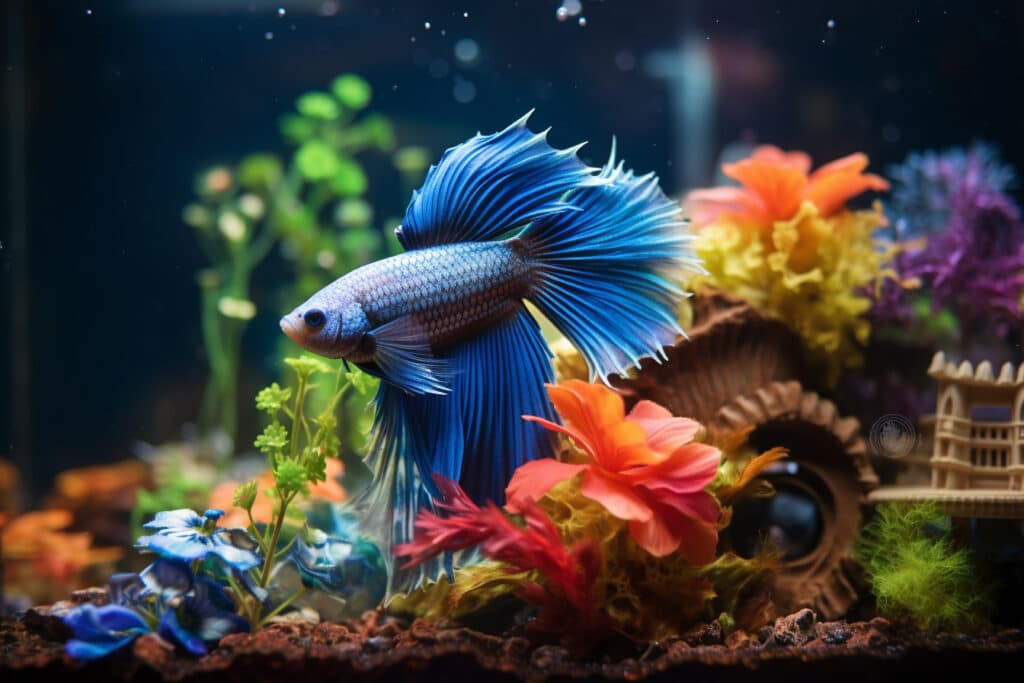
Now that you’ve established a comfortable environment for your betta, it’s time to make their home even more exciting and engaging! Adding decorations, plants, and toys can provide your betta fish with endless entertainment and a sense of security.
Next, we will discuss creative ways to enrich your betta’s home and maintain their happiness and activity levels.
Decorations and Hideouts
Betta fish are curious creatures, and providing them with a variety of decorations and hideouts can make their home much more interesting. Consider adding fish-safe caves, tunnels, and floating logs to offer hiding spots and reduce stress. You can also replicate their natural habitat with substrate, rocks, plants, and sticks, making your betta feel right at home.
When selecting decorations, ensure they’re safe and free of sharp edges that could harm your betta’s delicate fins. Offering an exciting and secure environment keeps your betta fish engaged, stress-free, and happy.
Live Plants vs. Artificial Plants
Plants are an essential addition to any betta tank, providing shelter and contributing to the overall aesthetics of the environment. But should you opt for live plants or artificial ones? Both options have their advantages.
Live plants can improve water quality by introducing oxygen and reducing nitrates, offering a secure place for your betta to hide. On the other hand, silk artificial plants provide a low-maintenance option while still offering shelter and security for your betta.
If you choose artificial plants, avoid plastic ones, as they can have sharp edges that may damage your betta’s fins, you can use Silk plants instead. Whichever option you choose, plants are an excellent way to enhance your betta’s home and improve their well-being.
Adding Toys and Accessories
Toys and accessories can add a fun and engaging element to your betta’s environment. Options like floating mirrors, ping pong balls (Just remember to clean them well before addin them to your betta tank), and worm feeder cones stimulate your betta’s natural instincts and provide entertainment. Interactive playtime with your betta fish can also strengthen the bond between you and your aquatic friend.
When introducing toys and accessories, ensure they’re safe and non-toxic to avoid any potential harm. Incorporating stimulating toys into your betta’s home will keep them entertained and boost their overall well-being.

Silicone Betta bed leaves are designed to mimic the natural environment of Betta fish, offering them a place to rest and hide near the surface of the water.
Proper Feeding and Diet
A well-balanced diet is essential for keeping your healthy betta fish happy. Providing the right nutrients, avoiding overfeeding, and offering a variety of food options can ensure your betta thrives.
Next, we will navigate through betta nutrition and the best feeding practices to maintain your betta fish’s health.
Betta-Specific Food
The ideal betta fish food should be meat-based and specifically formulated for bettas. High-quality flakes or pellets are perfect choices, as they provide the essential nutrients your betta needs. Experiment with different brands to find one your fish enjoys, and make sure to avoid feeding them other tropical fish food, as it may not contain the necessary protein content.
Selecting betta-specific food ensures your betta receives the proper nutrition for a healthy, active, and happy life.
Live and Frozen Foods
Supplementing your betta’s diet with live and frozen foods is a great way to provide variety and enrichment. Options like bloodworms, daphnia, and brine shrimp can offer essential nourishment and a fun feeding experience. Live foods can also encourage your betta’s natural hunting instincts, adding an extra layer of stimulation to their diet.
When feeding live or frozen foods, offer small portions no more than twice a week, allowing the food to sink to the bottom of the tank for easy access. Incorporating these exciting food options will make your betta’s diet both interesting and nutritious.
Feeding Schedule and Avoiding Overfeeding
Establishing a regular feeding schedule is essential for your betta’s health. Feeding your betta once or twice a day with the appropriate amount of food can prevent overfeeding, which may lead to health issues and water pollution. If feeding twice a day, offer 2-3 pellets at each feeding, or 3-4 pellets if feeding once per day.
Monitoring your betta’s eating habits and adjusting the food portions as needed can ensure they receive the right nutrition while maintaining a clean and healthy environment. Proper portion control also helps to minimize uneaten food in the tank. Happy feeding!

Ensure your fish stay healthy with these essential water test strips.
Water Quality and Maintenance
Maintaining water quality and performing regular maintenance is crucial for providing a clean and stable environment for your betta fish. Next, we will discuss:
-
Water testing
-
Water changes
-
Cycling
All crucial for your betta’s fins and continued well-being.
Water testing is essential for monitoring the water quality of your betta’s tank.
Water Testing and Parameters
Regular water testing is essential for ensuring your betta’s health and happiness. Monitoring the following levels can help you maintain optimal water parameters and address any imbalances:
The ideal pH range for betta fish is 6.5 to 7.5, providing a comfortable environment for them to live in.
Regular water testing and parameter adjustments will create a stable environment for your betta to thrive.
Water Changes and Cycling
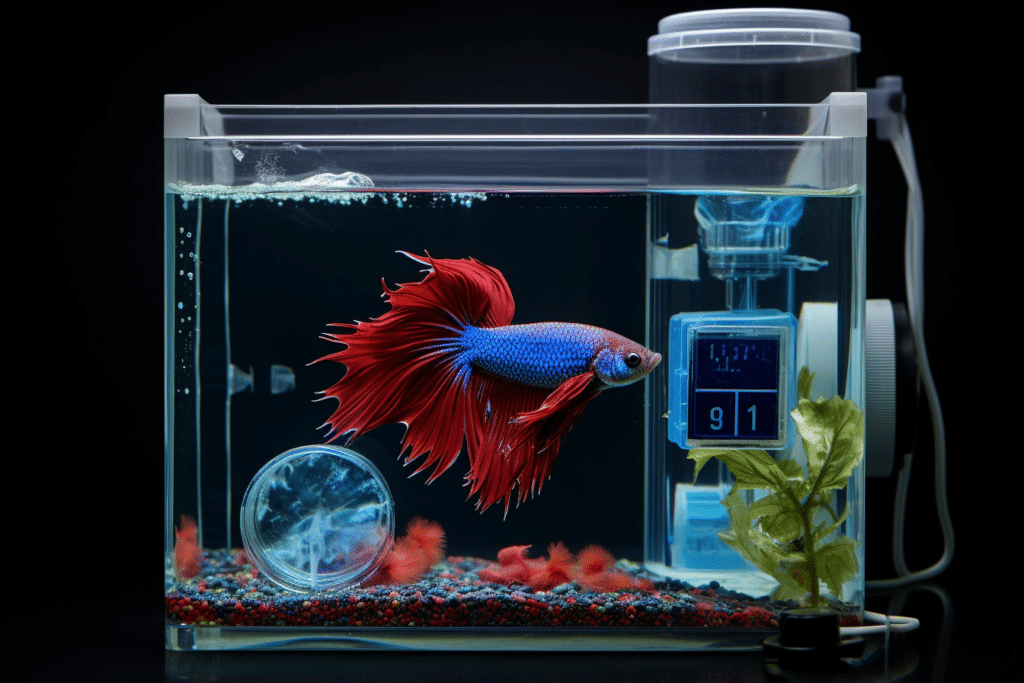
Performing weekly water changes is essential for maintaining a healthy betta tank. Here are the steps to follow:
Remove 20-40% of the tank’s water.
Replace the removed water with fresh, clean water.
Ensure the new water’s temperature and pH match the existing tank water to prevent stress or harm to your betta.
Add water conditioner to the new water. This will remove harmful chemicals such as chlorine and chloramine, making the water safe for your betta.
Add a bit of aquarium salt to the new water. Aquarium salt can help to prevent and treat many common diseases, and it’s a great way to keep your betta fish healthy. But remember to use it sparingly, as too much salt can harm your betta.
This process helps eliminate toxins and waste while replenishing lost minerals and nutrients, keeping your betta happy and healthy.
Cycling new tanks is also crucial for establishing beneficial bacteria that help break down waste and reduce harmful substances. Regular water changes and cycling will maintain a clean and healthy environment for your betta.
Filtration and Aeration
Using a filter and air stone in your betta tank can help maintain water quality while providing a gentle water flow that mimics your betta’s natural habitat. A sponge filter is an ideal choice for bettas, as it offers gentle filtration and keeps the tank clean. Be sure to adjust the filter’s speed to a low setting to ensure your betta’s comfort while swimming.
In addition to a filter, an air stone can be connected to an air pump and placed in the tank to gently oxygenate the water and create a calming current. Incorporating filtration and aeration helps maintain water quality and provides a comfortable environment for your betta fish.
This sponge aquarium filter integrates biochemical filtration, physical filtration and oxygenation

Choosing Compatible Tank Mates
While betta fish are known for their feisty nature, they can peacefully coexist with certain tank mates. Next, we will discuss the selection of compatible tank mates for your betta to ensure a harmonious aquatic community and reduced stress for your fish.
When selecting tank mates for your betta, it’s important to consider the size
Peaceful Fish and Invertebrates
When selecting tank mates for your betta, opt for non-aggressive fish and invertebrates such as snails and shrimp. These peaceful companions can coexist with your betta without causing harm or stress, creating a vibrant and diverse aquatic environment. Some examples of suitable tank mates include:
Snails.
Shrimp.
African dwarf frogs.
Corydoras catfish.
Neon tetras.
Choosing peaceful fish and invertebrates will promote a serene community in your betta tank and contribute to your betta’s well-being.
Avoiding Fin Nippers and Aggressive Species
It’s essential to avoid fin nippers and aggressive species that may cause harm or stress to your betta fish. Some fish, like:
Another male betta fish.
barbs.
cichlids.
loaches.
certain tetras.
Siamese fighting fish are known for their fin nipping behavior and should be avoided as tank mates.
Steering clear of aggressive species will protect your betta fish from potential harm and foster a peaceful environment for them to thrive.
Tank Size Considerations
When adding tank mates to your betta’s home, it’s crucial to consider tank size. Ensure there’s enough space and hiding spots for all inhabitants to coexist peacefully and comfortably. A minimum of 10 gallons is recommended for a betta tank with tank mates, with larger tanks being even better.
Remembering tank size when adding tank mates will help create a harmonious and spacious environment for all your aquatic friends.

Monitoring Betta Health and Behavior
Caring for your betta fish goes beyond setting up the perfect habitat and feeding them a balanced diet. It’s essential to monitor their health and behavior, ensuring their continued well-being, because betta fish deserve the best care possible.
Next, we will discuss how to identify signs of happiness, stress, or illness in your betta fish and what actions to take if you notice any issues.
Signs of a Happy Betta
Observing your betta for signs of happiness can help you ensure their well-being. A happy betta will display active swimming, and flaring, and interact with their environment. If your betta exhibits these behaviors, you can rest assured that they’re content in their home.
Keep an eye on your betta’s behavior and make adjustments to their environment, diet, or tank mates as needed to ensure their continued happiness.
Recognizing Stress and Illness
It’s equally important to recognize signs of stress or illness in your betta fish. Some signs to look out for include:
Lethargy.
Hiding.
Loss of appetite.
Discoloration.
If you notice any of these signs, consult a veterinarian or aquarium specialist for advice on how to address the issue and ensure your betta’s health.
Regularly monitoring your betta’s behavior and seeking professional help when needed can help you maintain their health and happiness.
Regular Health Checkups
Performing regular health checkups is vital for keeping your betta fish healthy. Here are some things to observe:
Swimming behavior: Is your betta swimming normally or are they lethargic or struggling to swim?
Physical appearance: Are there any changes in their color, fins, or scales? Are there any signs of injury or disease?
Appetite: Is your betta eating normally or have they lost their appetite?
If you notice any changes in their behavior or appearance, consult a veterinarian or aquarium specialist for guidance on how to address the issue.
Keeping a vigilant eye on your betta’s health and behavior will allow you to address any issues promptly, ensuring their continued happiness and well-being.
Summary
In conclusion, keeping a betta fish happy and healthy involves creating a comfortable environment, providing a balanced diet, maintaining water quality, choosing compatible tank mates, and monitoring their health and behavior. By following the guidelines outlined in this comprehensive guide, you can ensure your betta fish thrives and enjoys a long, happy life.
Now that you’re equipped with the knowledge and tools to care for your betta fish, it’s time to embark on the rewarding journey of betta fish keeping. With a little dedication and attention to detail, you’ll create a beautiful, nurturing home for your aquatic friend to flourish.

Frequently Asked Questions
How do I know if my betta fish is happy?
You can tell your betta fish is happy when it is swimming around the tank, interacting with you, and being curious about new things in its environment. Additionally, a healthy betta will be active and easy to find in its tank.
How do you bond with a betta fish?
Bond with your betta by talking to it frequently, tracing your finger along the glass, and adding bobbing toys to its tank. Watch the fish’s reaction for signs of recognition and engagement with you as you interact.
Do betta fish like the light on or off?
Bettas generally prefer the light to be off, allowing them to rest and conserve their energy during the night.
How often do you change water for betta fish?
It’s important to perform weekly water changes for betta fish to keep the pH levels in check and ensure they have access to fresh water. Aim for a 10-20% change each week depending on how heavily planted and filtered the tank is.
What can betta fish live with?
Betta fish can live with a variety of animals, including Corydoras Catfish, Neon and Emerald Tetras, Harlequin Rasboras, Guppies, Snails, Shrimps, African Dwarf Frogs, and Red Roof Floaters, making for an interesting and enjoyable aquarium environment.
Thank you for taking the time to read through our guide on how to keep and make your betta fish happy. We hope that you have found it informative and helpful. Remember, the key to a happy betta fish is a comfortable environment, a balanced diet, and regular monitoring of their health. Happy betta keeping!

Delighted to have you here at BettaReef! This place is a treasure trove of knowledge about Betta fish, Betta Care, Health, Gear, and much more from the wonders of aquatic life. My journey in this fascinating world began when I was just 8, and now, as a seasoned hobbyist, I’m here to help fellow Betta enthusiasts create a thriving Betta environment for a healthy life.
I’m committed to delivering high-quality content, backed by a stringent editorial process. Each product review is based on real-life usage and practical analysis, ensuring that you get insights and advice that truly matter.
Related Blog Posts:
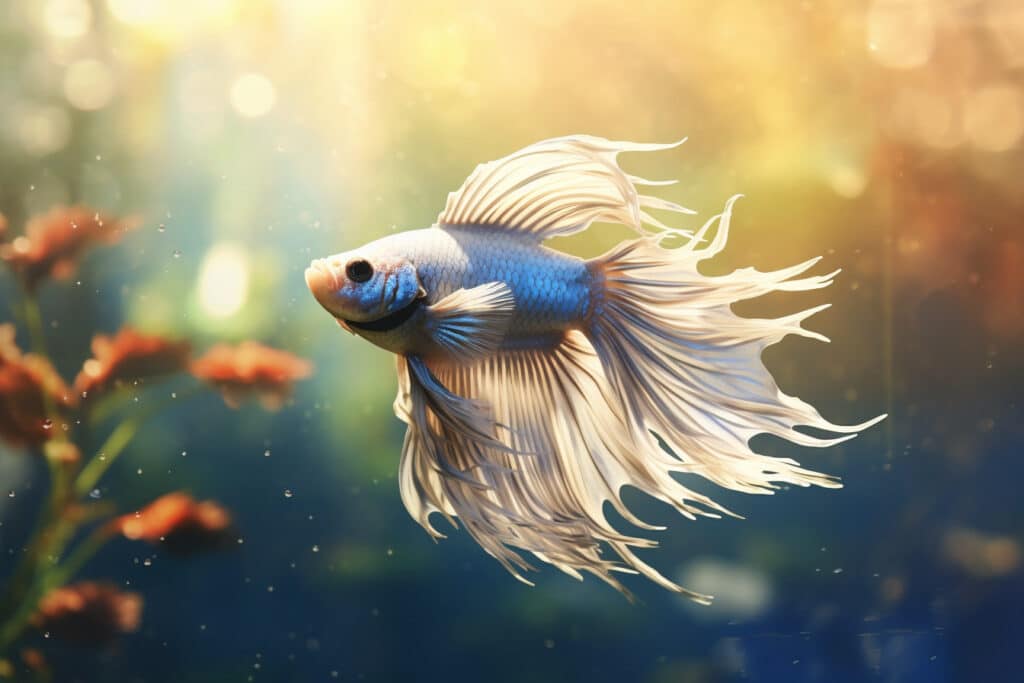
Unveiling The Mysteries of Pure White Betta Fish Have you ever heard of a fish

Swim To 🤿 Home 21 Most Beautiful Types of Betta Fish Betta fish or Siamese
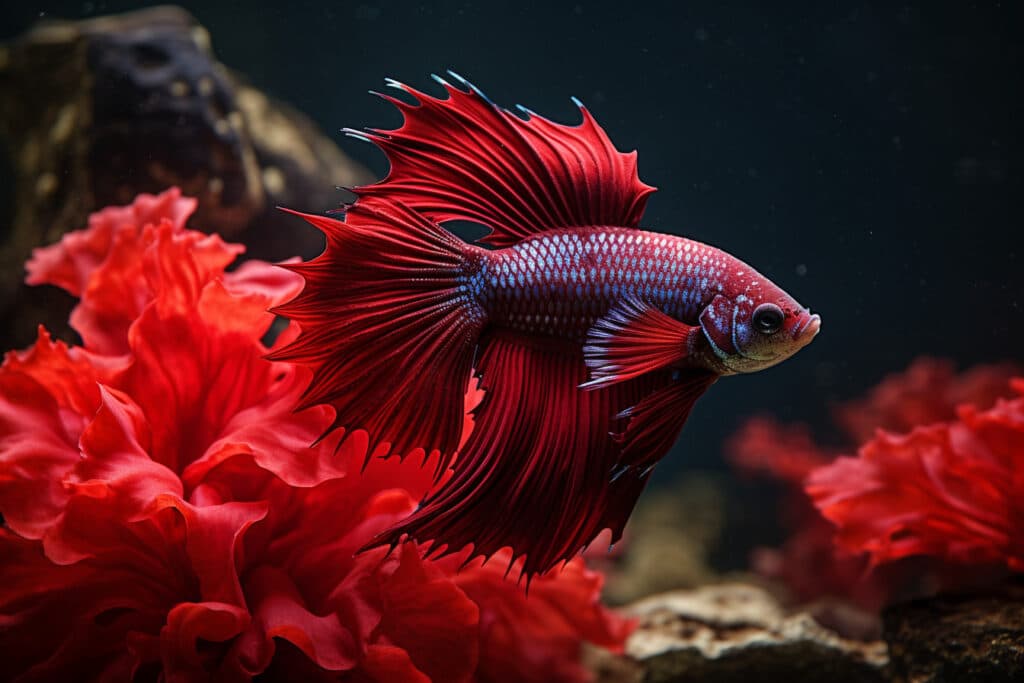
Awesome Red Betta Fish Breeding Tips Red betta fish are like little gems swimming around

